Physical Address
304 North Cardinal St.
Dorchester Center, MA 02124
Physical Address
304 North Cardinal St.
Dorchester Center, MA 02124
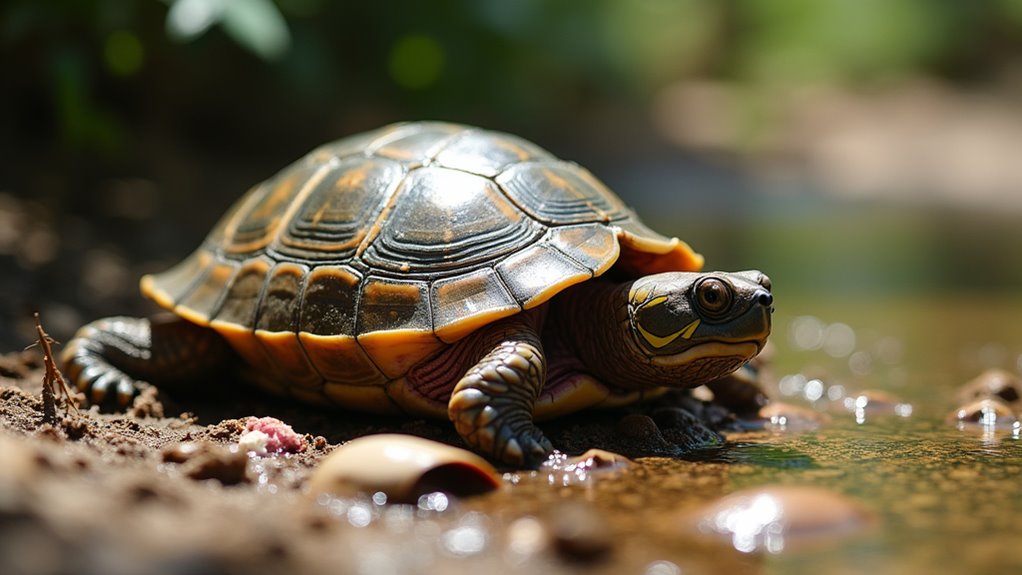
How turtles' shells function as living, integrated body parts, not removable homes—discover why they can never survive without them.
Turtles cannot survive without their shells, as they’re not removable homes but integral parts of their skeleton. The shell consists of fused ribs and vertebrae covered by specialized skin. Removing a turtle’s shell would be like removing your spine and ribs—instantly fatal. Their shells contain nerves, blood vessels, and living tissue that’s essential for survival. Understanding this biological integration reveals why these remarkable structures are far more than simple protective armor.
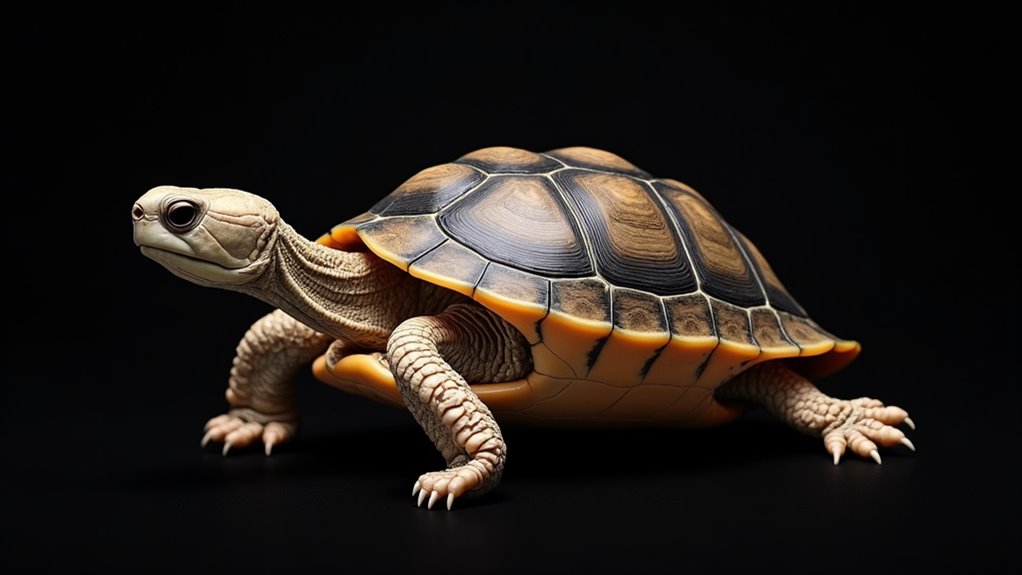
Unlike any other reptile, turtles possess an extraordinary anatomical feature that defines their existence: the shell. This isn’t just an external covering—it’s actually an integrated part of their skeleton, comprising a carapace (top), plastron (bottom), and connecting bridges. The shell structure includes fused ribs and vertebrae, making it impossible to separate a turtle from its shell without fatal consequences.
The turtle’s shell—not merely armor, but a skeletal masterpiece fused with the creature’s very being.
You’ll find that a turtle’s shell serves multiple essential functions beyond the obvious protection from predators. It provides structural support for internal organs and creates leverage points for limb muscles during movement.
The shell also plays a fundamental role in thermoregulation, helping turtles maintain appropriate body temperatures in various environments.
Perhaps most remarkably, turtle shells contribute to their metabolic processes, absorbing lactic acid during anaerobic respiration and releasing bicarbonate to neutralize acidity—adaptations that allow these remarkable creatures to survive in low-oxygen conditions.

While children’s cartoons often depict turtles stepping out of their shells like people exiting houses, this portrayal couldn’t be further from the truth. A turtle’s shell isn’t a removable home but an integral part of its body, composed of fused bone and skin with nerve endings that allow the turtle to feel pain when damaged.
You might be surprised to learn that shells evolved primarily to enhance burrowing abilities, not just for protection.
Today, they serve multiple functions including structural support, vitamin D synthesis, and environmental sensing. The shell consists of a complex structure with the carapace and plastron connected by a bony ridge that enables limited movement.
Contrary to popular belief, turtles can’t survive without their shells, nor can they regenerate shells after significant damage.
Different species have uniquely adapted shells for their specific environments, but all turtles share this absolute dependence on their living armor.
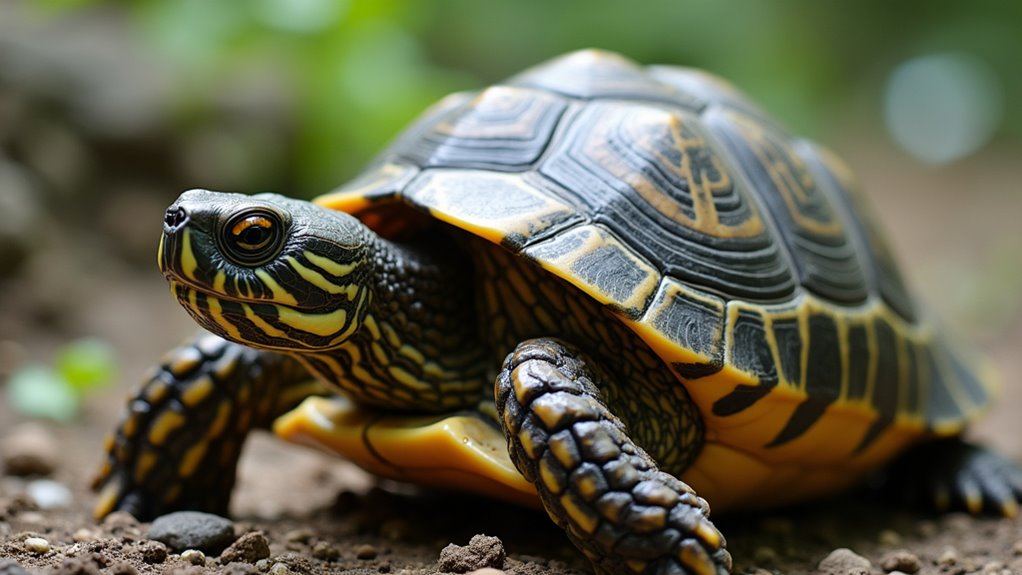
To understand why a turtle can’t simply slip out of its shell, we need to examine the remarkable biological integration that makes the shell an inseparable part of the turtle’s body.
The shell isn’t a detachable house but an extension of the turtle’s skeleton. Ribs and vertebrae grow directly into the carapace, while the plastron connects to the sternum. This skeletal fusion means removing a turtle’s shell would be like removing your ribs and spine—catastrophically fatal.
Unlike a snail’s portable home, a turtle’s shell is its skeleton—remove it, and you’re removing the turtle itself.
Beyond bones, the shell contains a complex vascular network that supplies blood to living tissue. The entire structure is innervated and vascularized, with thin but vital epidermal layers completing this integrated system. This integration begins during embryonic development when ribs grow sideways into the carapacial ridge, forming the foundation of the shell.
Even the sutures between shell plates serve functional purposes, allowing the minimal flexibility needed for breathing and movement.
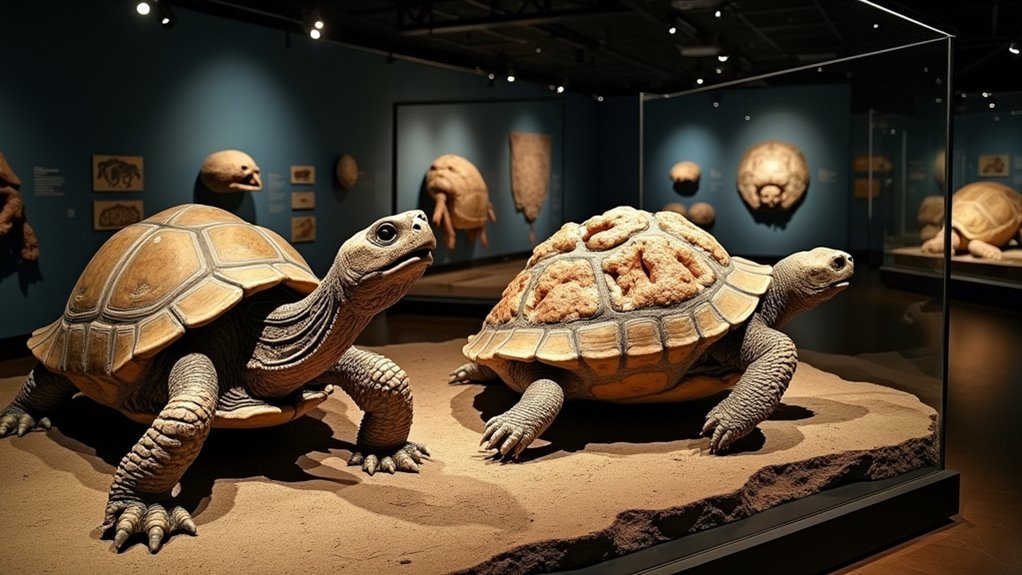
This fossorial lifestyle proved vital when the Permian mass extinction struck 252 million years ago.
The broadened ribs of early turtle ancestors provided strong anchor points for powerful digging muscles, allowing effective burrowing behavior long before complete shell formation.
As these proto-turtles continued evolving, their broadened ribs gradually expanded into protective plates—a perfect example of exaptation, where structures take on new functions.
The fossil record clearly shows this progression through species like Pappochelys and Odontochelys, which had incomplete shells.
Today’s diverse shell shapes reflect adaptations to various environments, enabling turtles to thrive in habitats from oceans to deserts for over 200 million years.
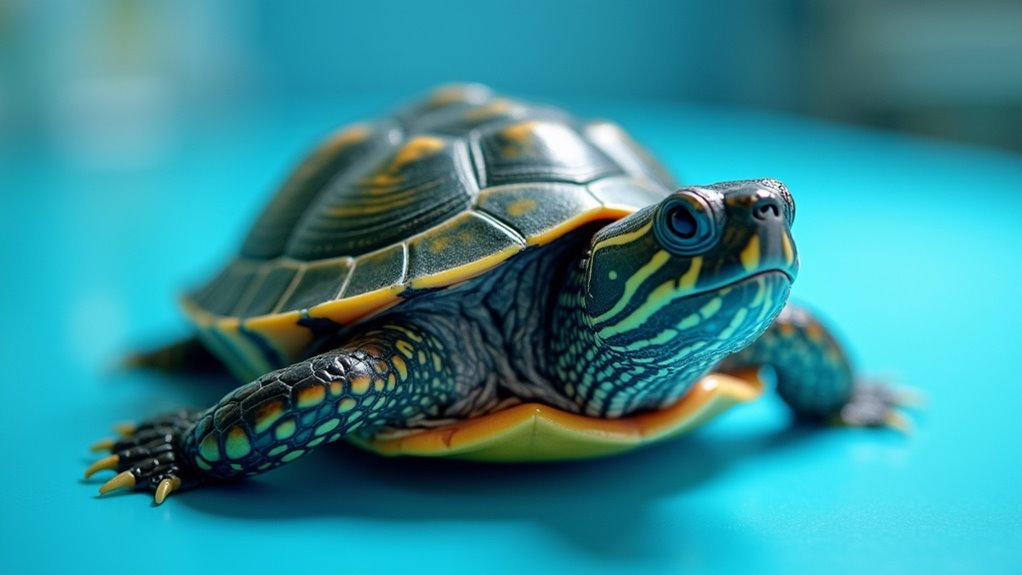
Far beyond mere protective armor, a turtle’s shell represents an extraordinary physiological marvel integrated with nearly every aspect of the animal’s survival. It’s not simply attached to the turtle—it’s part of its skeleton, encasing vital organs and providing essential protection.
You’ll find that a turtle’s shell serves multiple life-sustaining functions. During oxygen deprivation, the shell releases calcium and magnesium carbonates to buffer dangerous acid buildup, preventing fatal acidosis. This remarkable adaptation allows some species to survive months without oxygen at low temperatures. Unlike sea turtles that have evolved non-retractile limbs for efficient swimming, freshwater turtles can often pull their heads and limbs inside their shells for protection.
The shell also works in concert with the turtle’s exceptionally slow metabolism. This metabolic depression is carefully coordinated, with glycolytic pathways and ATP consumption dramatically reduced, enabling turtles to endure environmental extremes that would prove fatal to most vertebrates.
You’ve now seen why turtles can’t survive without their shells—they’re literally part of their skeleton. Consider the case of injured red-eared sliders at wildlife rehabilitation centers: even minor shell cracks require immediate veterinary care to prevent infection and organ damage. A turtle without its shell is like you without your ribcage and spine. It’s not removable armor—it’s their body.